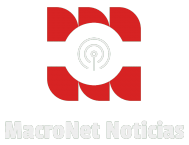Magnachip Semiconductor Corporation (NYSE:MX) Q3 2022 Earnings Conference Call November 2, 2022 5:00 PM ET
Company Participants
Yujia Zhai – The Blueshirt Group
YJ Kim – Chief Executive Officer
Shinyoung Park – Chief Financial Officer
Conference Call Participants
Martin Yang – Oppenheimer
Suji De Silva – ROTH Capital
Operator
Hello and thank you for standing by. Welcome to the Q3 2022 Magnachip Semiconductor Corporation Earnings Conference Call. At this time, all participants are in a listen-only mode. After the speaker presentation, there will be a question-and-answer session. [Operator Instructions]
It is now my pleasure to introduce Investor Relations Representative, Yujia Zhai.
Yujia Zhai
Hi, everyone. Thank you for joining us to discuss Magnachip’s financial results for the third quarter ended September 30, 2022. The third quarter earnings release that was issued today after the stock market closed can be found on the company’s investor relations website. The webcast replay of today’s call will be archived on our website shortly afterwards.
Joining me today are YJ Kim, Magnachip’s Chief Executive Officer; and Shinyoung Park, our Chief Financial Officer. YJ will discuss the company’s recent operating performance and business overview. Shinyoung will review financial results for the quarter and provide guidance for the fourth quarter of 2022. There will be a Q&A session following the prepared remarks.
During the course of this conference call, we may make forward-looking statements about Magnachip’s business outlook and expectations. Our forward-looking statements, and all other statements that are not historical facts, reflect our beliefs and predictions as of today and therefore are subject to risks and uncertainties as described in the Safe Harbor statement found in our SEC filings.
During the call, we will also discuss non-GAAP financial measures. The non-GAAP measures are not prepared in accordance with generally accepted accounting principles, but are intended to illustrate an alternative measure of Magnachip’s operating performance that may be useful. A reconciliation of the non-GAAP financial measures to the most directly comparable GAAP measures can be found in our third quarter earnings release available on our website under the investors section at www.magnachip.com.
I now will turn the call over to YJ Kim. YJ?
YJ Kim
Hello everyone, thank you for joining us today and welcome to Magnachip’s Q3 earnings call. First, before I begin, let me say that our hearts and prayers are with the families affected by Halloween incident over the weekend in Seoul and we wish a quick recovery for all those who were injured.
Moving on to our results, we closed Q3 revenue at $71.2 million, which was within the guidance range that we provided, but represented a disappointing 43.9% decrease year-over-year and 29.8% decrease sequentially. This result is obviously not satisfactory. As we indicated last quarter, our second half is being severely impacted by several macro challenges that I will detail as I discuss each of our two main businesses.
Beginning with our Display business, Q3 revenue was $6.4 million, down 89.1% year-over-year, and 77.6% sequentially. These results were primarily due to the supply shortages of 28 nanometer 12-inch OLED wafers in the second half of this year that impacted design-in projects from our large panel customer in Korea, which are typically awarded in advance based on future wafer supply allocation.
In addition, China COVID lockdowns and the dramatic slowdown in consumer spending as a result of global inflationary pressures reduced demand for smartphones, particularly in China, and resulted in an oversupply of channel inventories. This caused our large customer in Korea to significantly reduce orders to normalize inventory levels. Unfortunately, we believe these poor dynamics will continue in the near future, but we expect inventory levels will normalize by the middle of next year.
As the global geopolitical situation and economy remains very uncertain, we are focusing on executing the initiatives that are in our control and delivering a strong recovery of our Display business in 2023. During Q3, we made progress in these following areas:
First, regarding our new top-tier panel customer, last quarter, we disclosed that the timing of our mass production ramp was delayed due to the customer requesting a feature change so we had to make modifications to our product. In the beginning of October, we successfully released the new modified OLED DDIC to this customer and is now undergoing customer qualification. We anticipate this customer to complete qualification by the end of this year.
However, due to the continued weak consumer demand and channel inventory oversupply in China, we expect the production to commence towards end of Q1 2023. While this is unfortunate, the good news is that we received a second design-in project with this large customer.
We are extremely excited about this new award as it presents greater volume potential than the first project and also demonstrates our committed partnership. We expect to begin taping out this new part in November this year and begin mass production in late 2023. Over the next few years, OLED production in this region of the world is expected to more than double so we are obviously excited about our growing relationship with this customer.
Second, in September, we met several leading OLED manufacturers in this region and their interests in our products are very high due to our product competitiveness and differentiated capabilities. We’re continuously discussing with them for our future product business opportunities.
Third, regarding our large panel customer in Korea, last quarter, we announced we kicked-off the development of two new OLED driver IC projects with them. We expect to tape out one of the new projects this month and anticipate mass production by second half of next year.
Finally, regarding OLED wafer capacity, with the global economic slowdown, we are seeing more wafer availability at most foundries. As a result, we are now in discussions with multiple foundries for 2023 wafer capacity, as well as locking in agreements for longer-term supply. We believe our 2023 wafer supply will be more than 2x higher than 2022.
In summary, our near-term OLED results are very disappointing, and we expect demand weakness to continue in the near future. However, looking forward to 2023, we remain focused on executing towards a strong recovery of our OLED business driven by a significant improvement in both wafer supply and organic demand from our top-tier customers and new design wins.
Now, let’s turn to the Power Solutions Business. Q3 revenue was $56.4 million, down 4.2% year-over-year, and 10.4% sequentially, in-line with the broader slowdown we’re seeing in a global economy, particularly in consumer end markets. For example, our third quarter revenue was affected by lower demand for TVs, e-bikes, smartphones and computing applications.
Similar to our Display business, we expect this soft demand environment to continue in the near term as the economy further slows due inflationary pressures and consumers work through the excess inventories that have built up in the channel.
On a positive note, our higher margin Premium Tier products remained resilient in Q3 and grew 5.8% year-over-year and 2.3% sequentially driven by record demand for our IGBT product for Industrial Solar applications, which was up 80.4% year-over-year and 24.3% sequentially.
We are extremely excited about this trend as the solar industry is benefiting from strong tailwinds such as rising energy prices and favorable regulatory conditions globally as the world accelerates its clean energy initiatives.
In our super-junction MOSFET product line, we continue to see resilient demand as revenue only decreased 0.7% sequentially despite slowdown from TVs that was mostly offset from strength in industrial applications like LED Lighting, due to higher energy efficiency requirements. During the quarter, we were also awarded several new design-wins with our 600 and 650V super-junction MOSFETs with a leading TV manufacturer and an adaptor OEM.
In Q3, we continued to develop new Power products. In September, we introduced a new 200V Medium Voltage MOSFET that incorporates a third-generation trench technology that reduces capacitance by 50% versus the prior generation and significantly improves energy efficiency as a result of faster switching and a higher power density. This product is able to operate in temperatures between negative 55 C and 175 Celsius and is perfect for Light EV Motor controllers and industrial power supplies requiring high efficiency and stable power supply in various rugged conditions.
To summarize, our Power solutions business is not immune to slowdowns in the broader economy, but we are confident our technology, diversified product portfolio and product roadmap will help us remain resilient and recover with the market. With that said, we are cautious of the semi cycle we’re entering and are planning to reduce our 2023 CapEx spending by nearly 60% from 2022 levels. Shinyoung will provide more details in her section.
In closing, unfortunately, everyone is already too familiar with the inflationary environment that’s pressuring consumer spending, not to mention the other challenges like Ukraine, trade tensions between U.S. and China, and the energy crisis in Europe. However, we have a strong balance sheet to weather this down cycle and we continue to remain focused on executing our 2023 recovery plan.
We are making progress by winning new designs with our panel customers and expanding customers, as well as re-vitalizing new products in both of our businesses. In addition, our OLED wafer capacity challenges will be resolved next year and we are looking forward to a return to growth.
Before I turn the call over the Shinyoung, I do want to address the U.S. CHIPS Act that was enacted in October. At this moment, we do not expect any direct impact on our business in connection with its policies as our products utilize legacy technologies.
Now, I will turn the call over to Shinyoung to go over Q3 results and give our Q4 guidance. Shinyoung?
Shinyoung Park
Thank you, YJ, and welcome to everyone on the call. Let’s start with key financial metrics for Q3. Total revenue in Q3 was $71.2 million, down 29.8% sequentially and down 43.9% year-over-year. Revenue from the standard products business was $62.8 million, down 31.2% from Q2 and down 46.5% year-over-year.
As YJ already mentioned, both the sequential and year-over-year decrease were mainly attributable to the supply constraints for wafers in our OLED business and slow demand for Chinese and Korean smartphone models as a result of the global downturn in the smartphone market.
Revenue from our Power solutions business was [$56.4 million] [ph], down 10.4% sequentially and down 4.2% year-over-year. The sequential decline was due to a slowdown in TV, e-bikes, and computing applications affected by COVID lockdowns in China, but was partially offset by higher demand in solar and industrials.
Gross profit margin in Q3 was 24.2%, below the low-end of our guidance range as we recorded a $3.3 million charge to scrap 12-inch wafers as a result slowing demand caused by elevated smartphone inventories in China. Excluding this charge, our gross profit margin would have been 28.8%, slightly above the high-end of our guidance range.
In addition to the scrap cost, our lower gross profit margin year-over-year was driven by a lower utilization rate at our Fab 3, higher third party foundry costs, and unfavorable product mix.
Turning now to operating expenses. Q3 SG&A was $11.4 million, as compared to $12.7 million in Q2 2022 and $12.6 million in Q3 last year. Q3 R&D was $13.3 million, as compared to $13.4 million in Q2 2022 and $12.3 million in Q3 last year. Stock compensation charges included in operating expenses were $0.9 million in Q3, compared to $2 million in Q2 and $2 million in Q3 2021.
In Q3, our operating loss was $10 million, compared to operating income of $2 million in Q2 and $20 million in Q3 2021. Adjusted operating loss in Q3 was $6.6 million, compared to adjusted operating income of $4.8 million in Q2 and $22.7 million in Q3 a year ago. Adjusted EBITDA in Q3 was negative $3 million, compared to $8.5 million in Q2 and $26.4 million in Q3 a year ago.
We recognized a tax benefit of $3.9 million in Q3 due primarily to pre-tax book loss of our operating entity in Korea, mainly driven by non-cash foreign currency translation losses in connection with its intercompany loans.
For the full-year 2022, we expect GAAP tax to fall in the range of a benefit of $2 million to an expense of $4 million, excluding the impact of any further FX volatility. This wide range is due to multiple tax items in multiple jurisdictions such as realized foreign currency gains at our operating entity in Korea, expected U.S. taxes from the application of Section 174 of the U.S. Tax code, and other book and cash tax timing differences.
Net loss in Q3 was $17.2 million as compared with $3.3 million in Q2 and a [net income] [ph] of $10.8 million in Q3 a year ago. Our GAAP diluted loss per share in Q3 was $0.38, as compared with a loss per share of $0.07 in Q2 and an earnings per share of $0.23 in Q3 last year. Our non-GAAP diluted earnings per share in Q3 was $0.02, down from $0.23 in Q2 and down from $0.42 in Q3 last year.
Our diluted shares outstanding for the quarter were about 45.7 million shares, which reflects shares repurchased as part of our expanded share repurchase program that we announced in mid-September, and we continue to exercise the buyback that was authorized by the Board.
Moving to the balance sheet. Our cash balance at the end of Q3 was $250.8 million. This compares to $273.8 million at the end of Q2. Accounts receivable, net totaled $36.8 million, decreased 38.5% from Q2. Our days sales outstanding for Q3 was 47 days and 54 days in Q2. The decrease in accounts receivable, net in Q3 was attributable to the decrease in quarterly revenue along with the timing of related payments from certain customers.
Inventories, net totaled $37.3 million, compared to $36.2 million in Q2. Our average days in inventory for Q3 was 64 days and 45 days for Q2. Regarding our CapEx plan, Q3 CapEx was $10.3 million and we now anticipate total 2022 capital expenditures to be approximately $23.5 million, which is lower than our prior plan of $28 million, including about $8 million special CapEx for Fab 3 capacity upgrade.
This reduction is a result of negotiating better pricing terms and delaying the deployment of certain capital equipment. For 2023, we now anticipate CapEx to be approximately $10 million, which is nearly 60% lower from the 2022 level.
Before turning to our guidance, I want to provide some clarity on our year-to-date and Q3 cash flows that you see in our financial statements. As a result of this year’s Korean Won volatility against the U.S. dollars, our reporting translation from functional currency Korean Won to U.S. dollars may provide a confusing operating cash flow picture.
On a pro forma basis, excluding the impact of FX translation, our operating cash flow for the quarter was about negative [$450,000] [ph]. From a commercial standpoint, the majority of our sales are contractually in U.S. dollars, but about half of our spending are denominated in Korean Won. Our cash balance is also predominantly in U.S. dollars. Therefore, our policy is to hedge the risk of U.S. dollar is being weaker than our expectation by entering into certain hedging instruments, whose impacts turned out to be negative to our revenue in the recent quarters due to the current Korean Won volatility against the U.S. dollars.
Now, moving to our fourth quarter guidance. While actual results may vary, for Q4, Magnachip currently expects revenue to be in the range of $57 million to $62 million, including about $7 million of Transitional Fab 3 Foundry Services. Our Q4 guidance includes an estimated $5 million revenue loss from foreign currency exchange hedging instruments. Gross profit margin to be in the range of 26% to 28%.
Thank you and now I’ll turn the call back over to Yujia. Yujia?
Yujia Zhai
Thanks Shinyoung. That concludes the prepared remarks section of this earnings call. Operator, please begin the Q&A session.
Question-and-Answer Session
Operator
Certainly. [Operator Instructions] Our first question comes from the line of [Technical Difficulty] Needham & Company.
Unidentified Analyst
Yes. Thanks for taking my questions. YJ, just a few questions on the OLED business. You talked about the smartphone inventory levels won’t normalize until mid-2023, just wondering if you could from your vantage point characterize the amount of channel inventory that exists in the Chinese handset market right now? The market has been coming down in terms of units all year, but it doesn’t seem like we’re still at the bottom yet, any clarity on how much channel inventories is still there? And your comment about mid-2023, if I think I heard you correctly, maybe you can provide some insight on that timeframe.
YJ Kim
Yes. Raj, thanks for asking the question. So, we can’t really tell each customer by customer or the vendor, silicon vendor by silicon vendor, but that’s the signs that we see for ourselves. So, I think as you know, that we have a new product that we take out and sampled and it being qualified, we expect to go to production in first half with that product. And we also wrote a lot of inventories between Q2 and Q3 this year.
We expect to consume that in the first half and middle of next year. And then we expect to tape out two new products this month, and that we expect to go to production by second half. So, our comments based on those knowledge with our customers and our programs, but I can’t say for the industry and what they may be. So, that’s what we can say.
Unidentified Analyst
Got it. Okay. It makes sense. And so, you mentioned that you are – you’re seeing shortages on 28 nanometer, 12-inch that impacted your design in panel at Samsung display, but then you also mentioned that because of the reduction in demand that there is more capacity that’s being freed-up, particularly in 2023. So, just kind of reconcile, I guess what’s happening on 28 nanometer, 12-inch and kind of the commentary about 2023?
YJ Kim
Yes. So, you know we have qualified three 28 nanometer. And with the slowdown in the economy, we do see better variability. So, we are working with all the foundries and working out the arrangements and allocation for 2023 and 2024. And we do have either written or verbal commitment from our partners and we see more activity as a result as our customers also crosscheck with the foundries and we see more RFQs that’s coming in from our customers. And also there have been more top level meeting involving myself with our customers. So, we are working to come out and recover next year and beyond.
Unidentified Analyst
Got it. And just last question. You’re sitting on 250 million of cash on the balance sheet. The market cap is currently sitting around 460 million, so almost half of the market cap is in cash. So, what are the intentions for that cash on the balance sheet given where your stock price is now? Thank you.
YJ Kim
Yes. So, we do have a strategic review committee that’s formed and we are looking at every option to maximize shareholder value. One of them is a stock buyback, which we started to implement and we’re still doing that. And we’re looking all the various means to maximize shareholder value and also during this downturn, also a strong balance sheet also will help us come out of the downturn as well.
Unidentified Analyst
Thanks.
Operator
Thank you. And our next question from the line of Martin Yang with Oppenheimer.
Martin Yang
Hi, YJ. Thank you for taking my question. Can you first talk about some of the associated expenses that potentially will be invested in relating to your [indiscernible], are you raising to the new customers you’re engaging in China?
Shinyoung Park
So that’s Martin, I mean the – currently we are incurring some R&D expenses and that’s why you are seeing that, I mean our OpEx in Q3 was a little lower. That’s mainly due to some, kind of true down of our stock compensation expenses, but I mean our R&D is not really going down and that’s mainly due to, kind of to support those design R&D activities to support that new, kind of customer.
Martin Yang
Got it. And as you expand your business in China, do you see and how has the COVID restrictions impact your business development activities in China?
YJ Kim
So yes, Martin, this is YJ. So, thank you. So, I mean, it’s – we send our engineers and FAEs there. They have to go through quarantine just like anyone else, but it doesn’t – it [turns from] [ph] working with our new customer. So, but we’re hoping that the China becomes more available and reduced quarantine and trades more freely with the Western parts of the world.
Martin Yang
Thank you. Last question from me, are you seeing any capacity constraints for yourself either at [28 or 40] [ph] today?
YJ Kim
So, most of our product in OLED is 28 nanometer. So, we are seeing more availability of those. And as I said before, we have three foundries that we have qualified 28 nanometer. And either written or verbally, we have a better commitment for 2023 and 2024. So, we expect to have a long-term supply agreement with many of them and also grow the business together. And we are excited to see that the capacity will not be limiting factor, but more design wins. We started to see the design win activities picked up.
Martin Yang
Got it. Thank you very much. That’s it for me.
Operator
Thank you. And our next question comes from the line of Suji De Silva with ROTH Capital.
Suji De Silva
Hi, YJ, Shinyoung. So, for the China business, I’m curious what the foundries you’re securing, do you have domestic China foundry supply available to support that, I just reduced the de-risk kind of the geopolitical [potential issues] [ph]?
YJ Kim
Yes, Suji. Hi. Yes. So, we have – all the 12-inch foundries, as you know, is located outside Korea. And other than the global foundry, we haven’t really disclosed, but we are working out through the geopolitical situation, as well as make sure that the customers – our panel customers are comfortable using the foundries that we choose for them. So, that’s how we work out the relationship. So, that’s what we’re doing.
Suji De Silva
Okay. Help us understand that. Thanks. And then for the Power business, you said that was impacted by consumer spending, how does the next few quarters, kind of lay out for that? Is there inventory that has to be worked down in that segment or is that maybe, kind of reaching toward the back-end of that inventory adjustment?
YJ Kim
I think as I said before today, the consumer segment seems to be a little soft, but we still see strong industrial and the other premium product lines. So, as soon as I think the consumer sector becomes more normalized, I think we should be okay. So, that’s our current outlook obviously at this time.
Suji De Silva
Okay. And my last question is on the gross margin. Beyond the guidance for 4Q, what’s the intermediate-term outlook here maybe into [2023] [ph], what are some of the puts and takes on gross margin we should be thinking about as the year progresses?
Shinyoung Park
I mean, we only guide one quarter at a time. So, we haven’t really guided for the full-year 2023, but gross margin, they are like multiple factors, like that’s a [better gross margin] [ph]. So, the product mix obviously, but at the same time utilization of our internal fab and foundry cost, external foundry cost was 12-inch wafers, now that we’re going to be impacting our 2023.
So, we are, I mean, we don’t really disclose our, kind of target for 2023, but we are trying to get back to a little – because we have a little – the past two quarters we had, kind of one-time hit from the recognition of the inventory reserves and the scrap costs. So, we are trying to kind of get back to a normalized level in next year.
Suji De Silva
Okay. Thanks, Shinyoung. Thanks, YJ.
Operator
Thank you. And I’m showing no further questions. I’ll now hand the call back over to Investor Relations representative, Yujia Zhai, for any closing remarks.
Yujia Zhai
Thank operator. So, that concludes our Q3 earnings conference call. Please look for details of our future events on Magnachip’s Investor Relations website. Thanks everyone and take care.
Operator
Ladies and gentlemen, this concludes today’s conference call. Thank you for participating and you may now disconnect.






NOTICIAS DE ULTIMO MOMENTO:
Sheinbaum desea feliz 2025 a los mexicanos: «Estoy segura de que será un muy buen año»
Supersecretaría de Seguridad se estrenará el 1 de enero; publican reforma constitucional
Gobierno de la CDMX traza metas a 2027 para resolver la escasez de agua